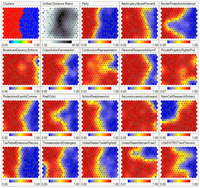
Photo from wikipedia
By 2020, mobile networks will support a wide range of communication services while at the same time, the number of user terminals will be enormous. To cope with such increased… Click to show full abstract
By 2020, mobile networks will support a wide range of communication services while at the same time, the number of user terminals will be enormous. To cope with such increased complexity in network management, innovative solutions for the next generation of self-organizing networks (SONs) need to be deployed. In the field of self-healing, the heterogeneous character of future fifth-generation (5G) radio access networks (RANs) will provide a diversity of measurements and metrics that can be translated into valuable knowledge to support detection and diagnosis activities. The more complete the information gathered, the better the SON mechanisms will be able to effectively analyze and solve radio problems. However, temporal dependence between metrics has not been previously addressed in the literature. In this paper, a self-healing method based on network data analysis is proposed to diagnose problems in future RANs. The proposed system analyzes the temporal evolution of a plurality of metrics and searches for potential interdependence under the presence of faults. Performance is evaluated with real data from a mature Long-Term Evolution (LTE) network. Results show that the proposed method exploits the available data in the context of heterogeneous scenarios, reducing the diagnosis error rate.
Journal Title: IEEE Transactions on Vehicular Technology
Year Published: 2017
Link to full text (if available)
Share on Social Media: Sign Up to like & get
recommendations!